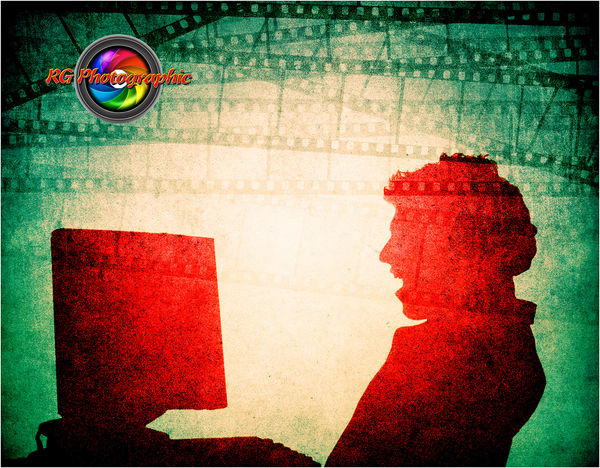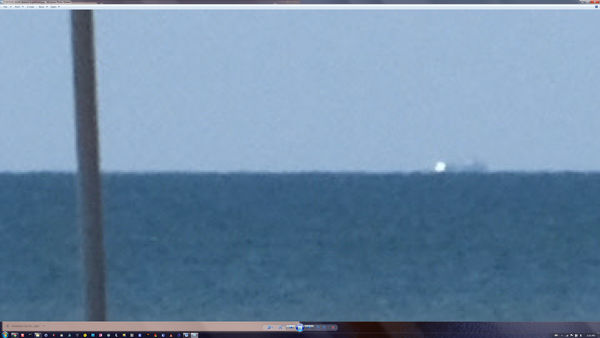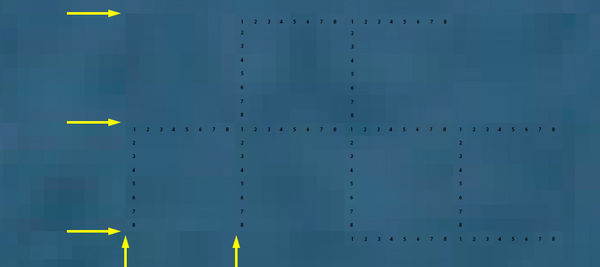Get it right vs fix it in post...
Apr 28, 2021 11:23:47 #
Ysarex
Loc: St. Louis
Fotoartist wrote:
Well, thanks for showing what you did and doing all the work. I appreciate the amount of time and effort you put into it.
For myself, I must say my Nikon D3, a 12MP camera shoots JPEGS that are pristine and impressive. But everyone doesn't have a 12MP D3. So what you are saying in general is probably good advice.
For myself, I must say my Nikon D3, a 12MP camera shoots JPEGS that are pristine and impressive. But everyone doesn't have a 12MP D3. So what you are saying in general is probably good advice.
Appreciate that. Yep there's going to be a difference in JPEG quality from an FX pro Nikon 12 megapixel camera and sub postage stamp Samsung pocket compact.
Apr 28, 2021 11:24:51 #
Ysarex wrote:
I showed the unique JPEG degradation with my first... (show quote)
So you have shown that, if we pixel peep closely enough, we can see the artifacts from editing an 8-bit image. You have also shown that too much JPEG compression can make the artifacts easier to see.
What you haven't shown is that the compression grid itself is at fault rather than simply the JPEG compression process as a whole. That's because you can't separate the two.
What many of us have been pointing out is that there is seldom enough degradation for most people to care. It's only important if we can see it when we wish it weren't there.
Apr 28, 2021 11:25:22 #
Ysarex wrote:
Appreciate that. Yep there's going to be a difference in JPEG quality from an FX pro Nikon 12 megapixel camera and sub postage stamp Samsung pocket compact.
Agreed.
Apr 28, 2021 11:32:42 #
Ysarex
Loc: St. Louis
selmslie wrote:
So you have shown that, if we pixel peep closely enough, we can see the artifacts from editing an 8-bit image. You have also shown that too much JPEG compression can make the artifacts easier to see.
What you haven't shown is that the compression grid itself is at fault rather than simply the JPEG compression process as a whole. That's because you can't separate the two.
What you haven't shown is that the compression grid itself is at fault rather than simply the JPEG compression process as a whole. That's because you can't separate the two.
That's a big Duuuuuuh. In the example I posted you can see the grid cells becoming visible due to the editing. That doesn't happen when editing the uncompressed 8 bit TIFF. The problem shown is JPEG unique and involves the lossy compression method which uses a grid laid over the image.
selmslie wrote:
What many of us have been pointing out is that there is seldom enough degradation for most people to care.
I pointed that out -- multiple times including in the most recent example. Anything else I said you want to confirm.
Apr 28, 2021 13:12:09 #
BigDaddy wrote:
Yes, you said you were out, you lied.
Your ad hominem attacks w/o addressing any of the raised issues, or your lame statements, says it all.
You were "out" from the get go!
Your ad hominem attacks w/o addressing any of the raised issues, or your lame statements, says it all.
You were "out" from the get go!
Awe, is calling people names what it takes to make daddy feel big? You can call me anything you like if it makes you feel better about yourself, just don't call me late for dinner. Seriously though, I said the topic was well covered by someone else so I was out. I didn't lie. Calling you to the floor for your hypocrisy is an entirely new topic.🤣😜
Apr 28, 2021 13:13:38 #
RodeoMan
Loc: St Joseph, Missouri
This thread might as well be called "How to take the joy out of photography"
Apr 28, 2021 14:10:27 #
LouieP
Loc: Sebring/Avon Park, FL area
My primary fix is cropping. Most of the photos Intake and share with my family and friends in social media are taken pretty much ‘on the fly’, particularly when hiking with a group. I may slightly enhance, color, trcture, exposure, etc on the raw photo, but the result comes pretty much like what Saw while hiking, be it cloudy or non cloudy skies, treelims, etc. I don’t normally do any deletions, replacements, etc. my friends see pretty much what I saw.
Apr 28, 2021 15:21:13 #
Apr 28, 2021 15:21:15 #
Apr 28, 2021 15:43:35 #
Ysarex wrote:
In the example I posted you can see the grid cells becoming visible due to the editing.
Since the "grid cells" do not overlap and since each one contains 8x8=64 pixels, a 24 MP image would contain 375,000 grid cells. That's a pattern of 500x740 cells.
Now ponder this. The Bayer array might use an 8x8 pattern of pixels in a grid cell. But that's not going to work for an X-Trans array which is based on a 6x6 pixel pattern (20+8+8). So instead of an 8x8 pixel pattern for the grid cells it would need to be a 6x6 pixel pattern or the number of red, green and blue pixels would not be the same in each cell. A 24 MP X-Trans array should contain about 666,667 grid cells at 6x6 pixels.
If you look at the pixelated image below you will see aberrations resulting from editing the 8-bit image and compressing it and saving it again. But none of those aberrations cover more than a small fraction of an 8x8 or even a 6x6 grid cell.
In other words, we can't see the grid cells.
And if you think you can see them you are not being honest with yourself.
This above all: to thine own self be true
And it must follow, as the night the day
Thou canst not then be false to any man
- Polonius in Hamlet In Act 1, Scene III
Apr 28, 2021 17:20:55 #
selmslie wrote:
Since the "grid cells" do not overlap an... (show quote)
Actually, assuming it is of a small resolution there aren't any JPEG artifacts that I can detect. That is if I assume that those are choppy waves in the water.
Apr 28, 2021 17:25:40 #
RodeoMan wrote:
This thread might as well be called "How to take the joy out of photography"
I remember in film days there was a popular Kodak book called 'The Joy of Photography'.
So if you use simplistic logic it would follow, you take the joy out of photography by taking film out of it and over-analyzing digital aspects.

Apr 28, 2021 17:46:51 #
Ysarex
Loc: St. Louis
selmslie wrote:
Now ponder this. The Bayer array might use an 8x8 pattern of pixels in a grid cell. But that's not going to work for an X-Trans array which is based on a 6x6 pixel pattern (20+8+8). So instead of an 8x8 pixel pattern for the grid cells it would need to be a 6x6 pixel pattern or the number of red, green and blue pixels would not be the same in each cell. A 24 MP X-Trans array should contain about 666,667 grid cells at 6x6 pixels.
Now ponder this. The Bayer array might use an 8x8 pattern of pixels in a grid cell. But that's not going to work for an X-Trans array which is based on a 6x6 pixel pattern (20+8+8). So instead of an 8x8 pixel pattern for the grid cells it would need to be a 6x6 pixel pattern or the number of red, green and blue pixels would not be the same in each cell. A 24 MP X-Trans array should contain about 666,667 grid cells at 6x6 pixels.
You're very confused. JPEG compression is applied to RGB images (actually JPEG is encoded ycbcr). Whether those images are from a Bayer or X-Trans CFA camera is entirely immaterial. The CFA over the sensor is not incorporated into an RGB image after the raw file is demosaiced and the sensor CFA has nothing to do with JPEG compression.
As for JPEG compression grid cells being visible in the screen shot you posted: very easy to see. Just look for the straight lines.
Apr 28, 2021 18:22:05 #
RodeoMan wrote:
This thread might as well be called "How to take the joy out of photography"
It was not meant that way...
Apr 28, 2021 18:39:43 #
Fotoartist wrote:
I remember in film days there was a popular Kodak book called 'The Joy of Photography'.
So if you use simplistic logic it would follow, you take the joy out of photography by taking film out of it and over-analyzing digital aspects.
So if you use simplistic logic it would follow, you take the joy out of photography by taking film out of it and over-analyzing digital aspects.

If you want to reply, then register here. Registration is free and your account is created instantly, so you can post right away.






